Results 8,061 to 8,070 of 12096
Thread: Anandtech News
-
04-25-18, 10:54 AM #8061
Anandtech: A Timely Discovery: Examining Our AMD 2nd Gen Ryzen Results
Last week, we published our AMD 2nd Gen Ryzen Deep Dive, covering our testing and analysis of the latest generation of processors to come out from AMD. Due to the tight deadline of our testing and results, we pushed both our CPU and gaming tests live without as much formal analysis as we typically like to do. All the parts were competitive, however it quickly became clear that some of our results were not aligned with those from other media. Initially we were under the impression that this was as a result of the Spectre and Meltdown (or Smeltdown) updates, as we were one of the few media outlets to go back and perform retesting under the new standard. None the less, we decided to take an extensive internal audit of our testing to ensure that our results were accurate and completely reproducible. Or, failing that, understanding why our results differed. No stone was left un-turned: hardware, software, firmware, tweaks, and code. As a result of that process we believe we have found the reason for our testing being so different from the results of others, and interestingly it opened a sizable can of worms we were not expecting.
More...
-
04-25-18, 10:54 AM #8062
Anandtech: LG Teases G7 ThinQ 6.1" QHD+ Super Bright LCD
In a blog post by LG, we’ve seen the company announce the display specifications of the upcoming LG G7 ThinQ. The company confirms that the G7 will continue sporting an LCD display as opposed to the OLED type that was applied most recently on the LG V30.
The article details that we’ll be looking at a 6.1” 3120x1440 display which comes at a very wide 19.5:9 aspect ratio. The G6 was a 5.7” phone with an 18:9 aspect ratio, which resulted in a screen width of 65mm. The G7’s increase screen size is compensated by the wider aspect ratio, so we’ll be looking at an identical 65mm screen width and thus we’re expecting a similar body size to the G6.
LG promises a “Super Bright Display” technology with specifications such as up to a 1000nits brightness, as well as overall 30% less power consumption compared to the LG G6’s screen. What I’m expecting here is that the LCD is of a RGBW type as it would be natural explanation for the improvements in brightness and power efficiency.
LG further explains that we’ll be seeing the DCI-P3 gamut fully supported, as well as different screen modes adhering to different gamuts. It will be interesting to see if LG actually implements full colour management in the G7 as that would be the a great asset and leap for the new phone. The article states that the colour balance will be individually adjustable with R, G, and B controls, and we also see a colour temperature slider in the screen colour screenshot.
Finally, LG confirms that the G7 will feature a notch. The G7 is said to have reduced the bottom bezel compared to the G6, and expanded the screen with a “Second Screen” (translation inaccuracy possible) at the top which is essentially the “ears” alongside the notch. In the blog post picture it’s notable that LG allows for the notch ears to be hidden in the software by blacking them out when integrated with the notification area, a feature Huawei first showed off in the P20 and P20 Pro.
We’re expecting LG to officially announce the G7 ThinQ soon.
More...
-
04-25-18, 12:05 PM #8063
Anandtech: Chinese DRAM Industry Spreading Its Wings: Two More DRAM Fabs Ready
Two more DRAM makers based in China, Innotron Memory and Fujian Jin Hua Integrated Circuit, are gearing up for volume production of computer memory in the coming month. Both manufacturers were founded with the help of the Chinese government, their output will initially be consumed locally.
Several years ago, the Chinese government announced plans to invest billions of U.S. dollars in the local semiconductor and adjacent high-tech industries and support appropriate companies directly and indirectly. Since the inception of the so-called Big Fund in 2014, not only over tens of billion were poured into various companies and initiatives (the plan is to invest $150 billion in the coming years), but the first actual results of their operations have started to show up. One of the industries that is developing fast in China is DRAM manufacturing. Earlier this year we reported about Xi'an UniIC Semiconductors, which started to sell its DDR4 chips developed and produced in-house. Apparently, there are at least two more DRAM makers in China ready to start shipments of their memory modules in the second half of 2018 and the first half of 2019: Fujian Jin Hua Integrated Circuit (JHICC) and Innotron Memory.
Fujian Jin Hua Integrated Circuit completed construction of its 300-mm fab in November and started to move in production tools late in 2017. According to a media report, the equipment move-in will be completed by early July and the first phase of the fab will be able to start volume production of DRAM in the third quarter. JHICC reportedly partnered with Taiwan-based UMC to develop its 22 nm DRAM manufacturing technologies, but at this point it is unclear which types of memory the company is gearing up to make. Some previous reports indicated that JHICC was looking at various specialized DRAM products (namely LPDDR4), but the actual plans might be different.
JHICC has already received the first phase of investment totaling $5.65 billion from the local authorities in Fujian, China. It is expected that aggregate investments in the Jin Hua DRAM fab will total $8 billion in the coming years. Manufacturing capacity of the JHICC’s memory fab is unknown, but the facility looks rather big on the picture.
Another China-based company that is getting ready to make DDR4 DRAM devices using its 22 nm fabrication process in the coming months is Innotron Memory (previously known as Hefei ChangXin and Hefei RuiLi). Innotron completed construction of its 300-mm fab in January and then started to move in production equipment. The company intends to start trial production of 8 Gb DRAM chips in late 2018 and then initiate volume production of these ICs sometimes in early 2019.
Innotron’s fab is not going to be very large: its initial capacity will be around 20,000 wafer starts per month in 2019, so in terms of volume it is not going to be a competitor for leading DRAM makers globally. Meanwhile, the firm intends to start building up the second phase of the fab in 2020 to boost its capacity. Furthermore, Innotron plans to complete development of its 17 nm process technology by 2021, the company announced recently.
Considering the facts that Innotron, Jin Hua, and Xi’an UniIC all had to start development of DRAM manufacturing technologies essentially from scratch, and their production capacities are not high, they are not expected to become viable competitors for companies like Micron, Samsung, and SK Hynix in terms of volumes, production efficiencies, or performance any time soon. In the meantime, there are more fabs incoming: in the recent years Tsinghua disclosed plans to invest $24 billion and $30 billion in memory chip production facilities near Wuhan and Nanjing, respectively. Furthermore, leading chip makers (Intel, Samsung, SK Hynix, etc.) already operate 3D NAND and DRAM fabs in China and invest in them to increase their capacities.
In the end, Chinese electronics industry will decrease their reliance on foreign volatile and non-volatile memory chips. Furthermore, it should be noted that it's questionable whether Chinese memory producers have all the patent/technology licenses they need to sell their products outside of China. Or for that matter with transnational semiconductor giants investing billions of U.S. dollars in China, whether they will be able to legally prohibit Chinese companies from building their presence on the foreign markets without facing problems from the Chinese authorities. The good news for the consumer is that with more 3D NAND and DRAM production in various parts of the world pricing of appropriate chips is going to decrease. The bad news is that without proper return-on-investments the progress of technologies may slow down.
Memory production is the first step towards establishment of a full-fledged self-sufficient semiconductor industry in China. Making memory ICs is relatively easy if you have appropriate process technologies, fabs, and clients to buy output. Designing competitive high-performance processors requires access to technology expertise and appropriate technology licenses from various companies. To boost its local SoC/CPU design industry, Tsinghua Unigroup acquired Spreadtrum and RDA in 2013 (which have a license to build mobile SoCs based on select Intel’s x86 cores), then signed an agreement with Intel to co-develop semi-custom server solutions. Meanwhile, Tianjin Haiguang Advanced Technology Investment Co., Ltd (THATIC) formed an x86 joint venture with AMD in 2016.
Related Reading:
- Chinese Xi’an UniIC Semiconductors Starts to Sell DDR4 Chips and Modules
- Intel and Tsinghua University to Co-Develop Semi-Custom Solutions for Servers
- Lite-On and Tsinghua Unigroup Create $100 Million Joint Venture for SSD Operations in China
- China Calling: AMD Forms Joint Venture for x86 Server SoCs in China
Sources: DigiTimes (1, 2), EETimes, SemiEngineering, ElectronicDesign, TrendForce
More...
-
04-25-18, 02:45 PM #8064
Anandtech: EKWB Releases Its First X470 Series Monoblock for ASUS ROG Strix X470-F Ga
With the release of the new X470 based chipset for the 2nd Generation AMD Ryzen CPUs, board partners have brought to market new motherboards designed to support AMD's new processors. With this, it is inevitable that major players in the cooling industry are scurrying to release new blocks for some of these boards. To that end, EKWB has announced the impending release of the the EK-FB ASUS Strix X470 monoblock, its first X470 series monoblock and one designed specifically to fit the ASUS ROG Strix X470-F Gaming motherboard. Based off the EK-Supremacy EVO cooling engine, liquid flows directly over both the 2nd Generation AMD Ryzen based CPUs (+ 7th Generation A-series/Athlon) and the power delivery bits in order to help keep the parts cool.
The EK-FB ASUS Strix X470 uses a high-flow design that EK says can easily be used with a system using a weaker pump and still achieve adequate flow rates. The base of the monoblock is constructed from nickel-plated electrolytic copper with the top made of acrylic glass material. Unlike many EKWB blocks, this will only come in the nickel version. EK goes on to say the cold plate is specifically designed to ensure the block has better mechanical contact with the HIS of AMD AM4 socket based processors to enable better thermal transfer.
The clear acrylic design and integrated 4-pin RGB LED strip lights up the channels the liquid flows through as well as the ‘Strix’ nameplate on the bottom. The 4-pin LED is able to connect to the motherboard’s 4-pin header and controlled through ASUS’ Aura Sync software, or any other 4-pin LED controller. The block will arrive fully assembled with its nickel plated brass screw-in standoffs preinstalled to save a couple of minutes on installation.
Included is the EK-FB ASUS Strix X470 RGB monoblock, mounting mechanism, and backplate, along with EK-TIM Ectotherm thermal paste to apply on the CPU as well as thermal pads for use on the voltage regulator modules. The block is currently available through pre-order through the EK Webshop and Partner Reseller Network. All pre-orders will begin shipping Tuesday, May 8th. Pricing for the EK-FB ASUS Strix X470 RGB Monoblock is 139.90€/$154.99. EK did not mention blocks for other boards would be released, but I have a feeling we can expect some.
Gallery: EKWB EK-FB-ASUS Strix X470 RGB Monoblock





Related Reading:EK-FB ASUS Strix X470 RGB Monoblock MSRP (incl. VAT) EK-FB ASUS Strix X470 RGB - Nickel Monoblock 139.90€ / $154.99 - Analyzing Thread Thermals: Big Base Cooling Wins
- EKWB Launches EK FLuid Gaming A240R Kit: Full-Cover Vega GPU COoling & Supremacy AX CPU Block
- Immersion Server Liquid Cooling: ZTE Makes a Splash at MWC
- Maingear Display New F131 Desktop with new 'Apex' Integrated Cooling
More...
-
04-25-18, 03:57 PM #8065
Anandtech: AMD Launches Combat Crate Bundles: CPU, GPU, & Motherboard In a Box
AMD on Wednesday announced its Combat Crate bundles, an initiative aimed to deliver a complete set of barebones PC hardware straight to the hands of gamers. The bundles will initially be available in North America and will enable DIY enthusiasts to get essential gaming PC components at a predictable price.
AMD’s Combat Crates include the company’s six-core Ryzen 5 1600 or eight-core Ryzen 7 1700 processor, an MSI B350 Tomahawk motherboard, as well as MSI’s Gaming Radeon RX 580 Armor graphics card with 8 GB of GDDR5 memory. The more affordable bundle featuring the six-core CPU will retail for $549, whereas the Combat Crate with the eight-core Ryzen will be more expensive.
Meanwhile, if you take a closer look at pricing of the Ryzen 5 1600-based Combat Crate bundle, it will become evident that the bundles were assembled not to provide significant discounts, but rather to offer stable pricing on select components. If the value of the CPU and the motherboard are deducted from the said Combat Crate bundle, the Radeon RX 580 with 8 GB of memory will be priced at $288, which is $39 lower than its retail price was at press time, yet $59 higher than its MSRP.
It is not a secret that getting a video card at its MSRP is challenging these days because of demand from miners. In the recent couple of quarters, we saw some retailers refusing to sell more than one graphics adapter to one household in a bid to exclude miners from their customers, but demand for video cards is still exceeding supply. There are multiple reasons for that: particularly that GDDR5 and HBM2 memory remain in short supply, limiting the total number of video cards that can be produced. Meanwhile parties who need hundreds or thousands of graphics adapters can buy them from distributors or directly from manufacturers.AMD Combat Crate Bundles Component MSRP Price When Sold Separately Bundle Price AMD Combat Crate Ryzen 5 1600 AMD Ryzen 5 1600 $189 $176 $549 MSI B350 Tomahawk unknown $85 MSI Gaming RX 580 8 GB $229 $327 Total when sold separately - $588 - AMD Combat Crate Ryzen 7 1700 AMD Ryzen 7 1700 $299 $260 unknown MSI B350 Tomahawk unknown $85 MSI Gaming RX 580 8 GB $229 $327 Total when sold separately - $678 - Amazon Ryzen 5 1600 Bundle AMD Ryzen 5 1600 $189 $176 $263 MSI B350 Tomahawk unknown $85 Total when sold separately - $261 -
By launching its Combat Crates, AMD is killing three birds with one stone: it sells off its remaining supply of first-generation Ryzen processors, it helps its partner MSI to sell its B350-based motherboards, and it enables gamers to get a graphics card at a price that is not going to skyrocket overnight because of an increased demand. Normally, bundling one-year old CPUs with two-year old GPUs would make sense for retailers and distributors (AMD’s Polaris 10 GPU was launched in June 2016, whereas the first-gen Ryzen was released in March 2017), but at this time AMD decided to do the bundling itself.
Buy AMD Combat Crate: Ryzen 5 1600, MSI B350, Radeon RX 580 on Amazon.com
Related Reading:
- The MSI B350 Tomahawk Motherboard Review: Gaming On a Budget
- AMD Announces the Radeon RX 500 Series: Polaris Refreshed, Starting Today
- The AMD Radeon RX 580 & RX 570 Review: A Second Path to Polaris
- The AMD 2nd Gen Ryzen Deep Dive: The 2700X, 2700, 2600X, and 2600 Tested
- A Timely Discovery: Examining Our AMD 2nd Gen Ryzen Results
- Best Video Cards for Gaming: Q2 2018
More...
-
04-25-18, 10:07 PM #8066
Anandtech: Microsoft Rolls Out Xbox April Update: FreeSync And More
Although we’ve not yet gotten an official launch date for the latest version of Windows 10, Microsoft’s Xbox team has once again beat them to the punch with a new version of the console OS called the April Xbox Update. Apparently, they’ve not been able to come up with anything more “creative” this time for a name, but it’s April, so it works.
Although this isn’t a major UI revamp like some of the previous updates, there are some interesting features coming to the Xbox One with this update, including support for some new video features, of which the most notable is likely FreeSync support. PC gamers already know the advantages of variable refresh rates on display output smoothness, so it’s great to see it come to the console as well. Xbox One will support FreeSync and FreeSync 2 across the entire device lineup – including the original Xbox One. You’ll of course need a FreeSync certified display, and it will need to support FreeSync over HDMI, so while the pickings are slim at the moment, the feature is here now. It’ll be interesting to see this in action if we can get a display though, since the target refresh rate of most Xbox games is 30 FPS, unlike the PC.
Also on the video side, the Xbox team has added support for the 2560x1440 display resolution on both the Xbox One X and Xbox One S. If you’re someone who runs an Xbox on a PC display, this gives an option for a higher resolution for media, and if you’re using the Xbox One X, you can also game at 1440p if the game supports it.
Finally, Xbox is adding support for Auto Low-Latency Mode, which will tell your television when you’re playing a game, so it can switch the display mode to what’s normally called Game Mode on the television, but then automatically switch back to the normal mode for media.
Microsoft is also updating their Mixer streaming service to include the ability to share control of a game with a user on Mixer.com, where a virtual controller will allow them to input commands, or they can plug in an Xbox controller to their PC to control it that way.
Along with sharing gameplay to Mixer, Xbox now lets you share screenshots and clips directly to Twitter as well, through the Broadcasting and Capture tab, which is a nice addition.
Microsoft has also added the ability to selectively balance game audio against background music within the Guide, so if you want your streaming music louder or softer, it’s much easier to adjust on the fly, simply by opening the guide and opening that app.
Along with that, audio has also been updated on the dashboard itself to support spatial audio, so if your receiver supports spatial audio, and you have the sound system to play it, actions on the dashboard should now match what you see on-screen.
Xbox One has seen a tremendous number of features since it was launched, and this update seems a bit small in comparison to the additions of backwards compatibility, or a dashboard overhaul, but regardless, the new features are requests from users, and they are likely happy to see them.
Source: Xbox
Gallery: Microsoft Rolls Out Xbox April Update: FreeSync And More





More...
-
04-25-18, 10:07 PM #8067
Anandtech: AMD Announces Q1 FY 2018 Results: Big Gains
This afternoon, AMD announced their earnings for the first quarter of their 2018 fiscal year, and their recent trend of performance has continued, with revenues for the quarter up 40% to $1.65 billion. Even more importantly, they’ve finally gotten to the point where they are able to achieve solid margins, which were 36% for this quarter, up 4% from last year. This lead to operating incomes of $120 million, compared to just $11 million a year ago. Net income was $81 million for the quarter, compared to a $33 million loss last year. Earnings per share were $0.08, up from a $0.04 loss per share last year.
AMD has been in a situation where they’ve been relying on Non-GAAP measures to show the underlying business in the midst of restructuring debt, and losses due to changing their wafer agreement, but these results are all GAAP, and all good. The big gains are thanks to the Computing and Graphics segment, which almost doubled in revenue compared to the same quarter last year. This group had revenues of $1115 million, compared to $573 million a year ago, which is a 94.6% increase. There’s likely no surprise here, but that increase is thanks to strong sales of both Radeon graphics, and Ryzen processors. Processor average selling price (ASP) increased thanks to more sales of Ryzen, and GPU ASP also increased, thanks to Vega, and likely the cryptocurrency craze which has definitely driven up prices. Operating income for this segment was $138 million for the quarter, compared to an operating loss of $21 million a year ago. Basically, there’s nothing but good news here, after far too long of struggling in this segment.AMD Q1 2018 Financial Results (GAAP) Q1'2018 Q4'2017 Q1'2017 Revenue $1647M $1340M $1178M Gross Margin 36% 34% 32% Operating Income +$120M -$2M +$11M Net Income +$81M -$19M -$33M Earnings Per Share +$0.08 -$0.02 -$0.04
AMD’s other segment is their Enterprise, Embedded, and Semi-Custom segment, and this group is the ones that really carried them through the lean years, with AMD diversifying quite a bit into semi-custom SoCs, and it certainly helped that they got design wins in both the Sony PlayStation 4, and the Microsoft Xbox One. Revenue for this segment wasn’t quite as rosy as the Computing and Graphics, with quarterly revenues of $532 million, which was down 12% compared to Q1 2017. The revenue decline is attributed to lower semi-custom revenue, but somewhat offset by higher server and embedded revenue. EPYC processor revenue has helped, but not enough to offset the loss of revenue in semi-custom. Operating income for this segment was $14 million, compared to $55 million a year ago, but AMD attributed the majority of the operating income decrease to a licensing gain in Q1 2017 which inflated the numbers.AMD Q1 2018 Computing and Graphics Q1'2018 Q4'2017 Q1'2017 Revenue $1115M $908M $573M Operating Income +$138M +$33M -$21M
All Other had an operating loss of $32 million, compared to a loss of $23 million a year ago.AMD Q1 2018 Enterprise, Embedded, and Semi-Custom Q1'2018 Q4'2017 Q1'2017 Revenue $532M $432M $605M Operating Income +$14M -$13M +$55M
Overall, there’s little to be disappointed with here. Likely AMD is hoping for stronger EPYC sales to improve its segment, but the Computing and Graphics segment was strong enough to carry the day easily. Looking forward to next quarter, AMD is expecting revenues of $1.725 billion, plus or minus $50 million, which would be a 50% increase from Q2 2017.
Source: AMD Investor Relations
More...
-
04-26-18, 09:59 AM #8068
Anandtech: The ASRock X299 Extreme4 Motherboard Review: $200 Entry To HEDT
The ASRock X299 Extreme4 is an entry-level motherboard from ASRock designed to give users an inexpensive step into the premium land of the high-end desktop. At $200, it is the least expensive X299 motherboard we have tested, but still has a plethora of features including USB 3.1 ports, dual M.2 slots, premium audio, as well as SLI and Crossfire support. The mid-range feature set on an entry-level board makes for an intriguing selection.
More...
-
04-26-18, 11:01 AM #8069
Anandtech: NVIDIA Releases 397.31 WHQL Drivers: Vulkan 1.1 Support, NVIDIA RTX, And M
After quietly announcing legacy support status for Fermi GPUs and 32-bit operating systems earlier this month, NVIDIA today has released the first Release 396 drivers with 397.31 WHQL, headlined with Game Ready titles BattleTech and Frostpunk. As the first of a new driver branch, 397.31 is a wide-ranging update that introduces a number of new features, including NVIDIA RTX developer preview support, additional sampling rates for GPU HDMI audio, Vulkan 1.1 mainstream support, and tempfile auto-removal functionality for the display driver standalone installer. And as expected, Release 396 officially drops mainstream ‘Game Ready’ support for Fermi and 32-bit operating systems.
Release 396 Features for Consumers
Starting things off with driver installation itself, the display driver standalone installer now automatically removes the temporary files that it self-extracts at the beginning of the process. As for the less glamorous world of HDMI audio through video cards, the new NVIDIA HD audio driver version 1.3.37.1 now supports 32, 88.2, and 176.4 kHz sample rates for all GPUs, rounding out the existing driver support for 44.1, 48, 96, and 192 kHz. The newly-added sample rates are rather uncommon compared to 44.1 (e.g. music CDs) and 48 kHz (e.g. digital video formats), and even 96 and 192 kHz (e.g. professional music recording or audiophile), but still adds versatility to HTPC setups powered by discrete NVIDIA graphics. It appears that 20 bit sample size remains unsupported, and no change to codec support was mentioned.
Meanwhile, although full support for Vulkan 1.1 was made available in NVIDIA developer drivers when the API update was launched last month, 397.31 has brought it to the mainstream Game Ready branches as opposed to beta Windows drivers. For end-users, this is another step to running Vulkan 1.1 applications, though NVIDIA notes that 397.31 passes the Vulkan Conformance Test Suite version 1.1.0.3, as opposed to the major 1.1.1.0 update that was released earlier in April.
Last but not least, alongside with the usual Game Ready support for BattleTech and Frostpunk, both released yesterday, NVIDIA has also added or updated SLI profiles for Descenders, Frostpunk, Warhammer Vermintide 2, and Far Cry 5.
Release 396 Features for Developers: RTX, Optimus DLLs, & NVDECODE API Updates
A little over a month ago, Microsoft announced DirectX Raytracing (DXR), bringing a standardized API for hardware and software accelerated ray tracing under DX12. Alongside this, NVIDIA unveiled their RTX Technology, NVIDIA's underlying runtime for DXR and other real-time raytracing solutions. RTX supports Volta and later GPUs to accelerate ray tracing via a combination of hardware and software. With today’s driver release, NVIDIA RTX has finally arrived in the form of a developer preview. As NVIDIA notes, developing RTX-accelerated DXR applications requires the following:
- NVIDIA Volta GPU
- NVIDIA driver version 396 or higher
- Windows 10 RS4 (colloquially known as “Spring Creators Update”)
- Microsoft DXR developer package (includes DXR-enabled D3D runtimes, HLSL compiler, and headers)
As for mainstream developers, the recent announcement of the Quadro V100 now brings a suitable Volta GPU solution with professional Quadro drivers outside of the deep-learning/HPC oriented Tesla Volta lineup and the prosumer Titan V.
Also of interest to developers is an update to the NVDECODE API, adding client capabilities to reconfigure decoder parameters without destruction and recreation of the decoder instance. These parameters include post-processing elements such as display resolution, cropping rectangle, and aspect ratio of the decoded frame. In practical terms, this benefits developers in situations where initializing the decoder instance would greatly add to the overall decode execution time; NVIDIA mentions an example of decoding multiple short clips of varying resolutions back-to-back.
This functionality will feature in NVIDIA’s Video Codec SDK 8.2, which is expected to release later this quarter. And though the 397.31 release notes refer to NVDECODE as a whole new API, it has been around since the release of the Video Codec SDK 7.0 in 2016, where it was re-named from NVCUVID API. As part of the Video Codec SDK, the NVDECODE API deals with video decode acceleration using NVIDIA GPUs’ dedicated ‘NVDEC’ hardware decoder blocks, comparable to the video encoding/decoding hardware blocks of Intel (Quick Sync Video) and AMD (VCE/UVD).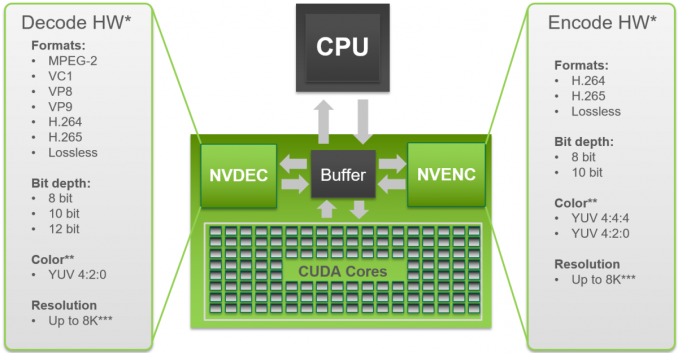 * NVIDIA's footnotes: *Diagram represents support for Pascal GPU family; **4:2:2 is not natively supported on HW; ***Support is codec dependent
* NVIDIA's footnotes: *Diagram represents support for Pascal GPU family; **4:2:2 is not natively supported on HW; ***Support is codec dependent
And on a more minor note, NVIDIA has included two new libraries (nvdlist.dll and nvdlistx.dll) to support Optimus and MSHybrid notebooks, referring to the capability of graphics load switching between integrated and discrete graphics adapters to save power and increase battery life.
Bugfixes and Open Issues
As always, today’s driver release includes bugfixes and open issues. The following bugs are addressed and resolved in 397.31:
- DOOM crashes on the GeForce GTX 1080 Ti due to the driver reverting to OpenGL 1.1 when HDR is enabled
- Far Cry 5 crashes on the GeForce GTX 1060 after a few minutes of gameplay
- NvfbcPluginWindow temporarily prevents Windows from shutting down after launching a Steam game
- Driver TDR error may occur when using Firefox.
- Rise of the Tomb Raider experiences flickering/corruption on the GeForce GTX 1060 when opening the in-game options.
- With V-Sync and SLI both enabled in NVIDIA Control Panel, Diablo III freezes after switching windows (Alt + Tab) a few times
397.31 has also introduced several new bugs, and NVIDIA has documented the following new issues in Windows 10:
- With HDR turned on, full-screen video playback on Microsoft Edge on an HDR display may cause corruption of the video and desktop
- To recover, manually power-cycle the monitor
- TDR errors may occur on the GeForce GTX 1080 Ti when changing resolutions in-game for Warhammer Vermintide 2 running in DX12 mode
- As a workaround, use the DX11 option
- NVIDIA Surround hotkeys as set in NVIDIA Control Panel do not work
- GeForce Experience's "In-Game Overlay" option cannot be enabled, nor does ShadowPlay recording work
- The Microsoft Media Foundation library must be installed in order to use these features
Release 396 also does not support Microsoft Surface Books, with support due in a future driver release. Naturally, 397.31 does not apply to Fermi GPUs and 32-bit OSes, nor will any future Game Ready drivers.
The updated drivers are available through the GeForce Experience Drivers tab or online at the NVIDIA driver download page. The latest GeForce Experience client can also be found separately on its own download page. More information on this update and further issues can be found in the 397.31 release notes.
Buy GIGABYTE GTX 1080 Ti 11GB on Amazon.com
Related Reading- AMD Releases Radeon Software Adrenalin Edition 18.3.3: Unified Vulkan 1.1 Driver
- Expanding DirectX 12: Microsoft Announces DirectX Raytracing
- NVIDIA Announces RTX Technology: Real Time Ray Tracing Acceleration for Volta GPUs and Later
More...
-
04-26-18, 01:21 PM #8070
Anandtech: CPU Design Guru Jim Keller Joins Intel; Completes CPU Grand Tour
For long-time AnandTech readers, Jim Keller is a name many are familiar with. The prolific microarchitectural engineer has been involved in a number of high-profile CPU & SoC projects over the years, including AMD’s K8 and Zen CPUs and Apple’s early A-series SoCs. Now after a stint over as Tesla for the past couple of years, Intel has announced that they have hired Keller to lead their silicon engineering efforts.
After rumors on the matter overnight, in a press release that has gone out this morning, Intel confirmed that they have hired Jim Keller as a Senior Vice President. There, Keller will be heading up the 800lb gorilla’s silicon engineering group, with an emphasis on SoC development and integration. Beyond this, Intel’s press release is somewhat cryptic – especially as they tend not to be very forward about future processor developments. But it’s interesting to note that in a prepared statement included with the press release, Dr. Murthy Renduchintala – Intel’s Chief Engineering Officer – said that the company has “embarked on exciting initiatives to fundamentally change the way we build the silicon as we enter the world of heterogeneous process and architectures,” which may been seen as a hint of Intel’s future direction.
What is known for sure is that for most of the last decade, Keller’s engineering focus has been on low-power hardware. This includes not only his most recent stint at Tesla working on low voltage hardware, but also his time at Apple and PA Semiconductor developing Apple’s mobile SoCs, and even AMD’s Zen architecture is arguably a case of creating an efficient, low-power architecture that can also scale up to server CPU needs. So Keller’s experience would mesh well with any future development plans Intel has for developing low-power/high-efficiency hardware. Especially as even if Intel gets its fab development program fully back on track, there’s little reason to believe they’re going to be able to duplicate the manufacturing-derived performance gains they’ve reaped over the past decade.
As for any specific impact Keller might have on Intel’s efforts, that is a curiosity that remains to be seen. Keller’s credentials are second to none – he’s overseen a number of pivotal products – but it bears mentioning that modern processor engineering teams are massive groups working on development cycles that span nearly half a decade. A single rock star engineer may or may not be able to greatly influence an architecture, but at the same time I have to imagine that Intel has tapped Keller more for his leadership experience at this point. Especially as a company the size of Intel already has a number of good engineers at their disposal, and unlike Keller’s second run at AMD, the company isn’t recovering from a period of underfunding or trying to catch up to a market leader. In other words, I don’t expect that Intel is planning on a moment of Zen for Keller and his team.
Though with his shift to Intel, it’s interesting to note that Jim Keller has completed a de facto grand tour of the high performance consumer CPU world. In the last decade he’s worked for Apple, AMD, and now Intel, who are the three firms making the kind of modern ultra-wide high IPC CPU cores that we see topping our performance charts. Suffice it to say, there are very high-profile engineers of this caliber that these kind of companies will so openly court and/or attempt to pull away from the competition.
For those keeping count, this also marks the second high-profile architect from AMD to end up at Intel in the last 6 months. Towards the end of last year Intel picked up Raja Koduri to serve as their chief architect leading up their discrete GPU development efforts, and now Jim Keller is joining in a similar capacity (and identical SVP title) for Intel’s silicon engineering. Coincidentally, both Kodrui and Keller also worked at Apple for a time before moving to AMD, so while they haven’t been on identical paths – or even working on the same products – Keller’s move to Intel isn’t wholly surprising considering the two never seem to be apart for too long. So it will be exciting to see what Intel is doing with their engineering acquisitions over the coming years.
More...
Thread Information
Users Browsing this Thread
There are currently 12 users browsing this thread. (0 members and 12 guests)





 Quote
Quote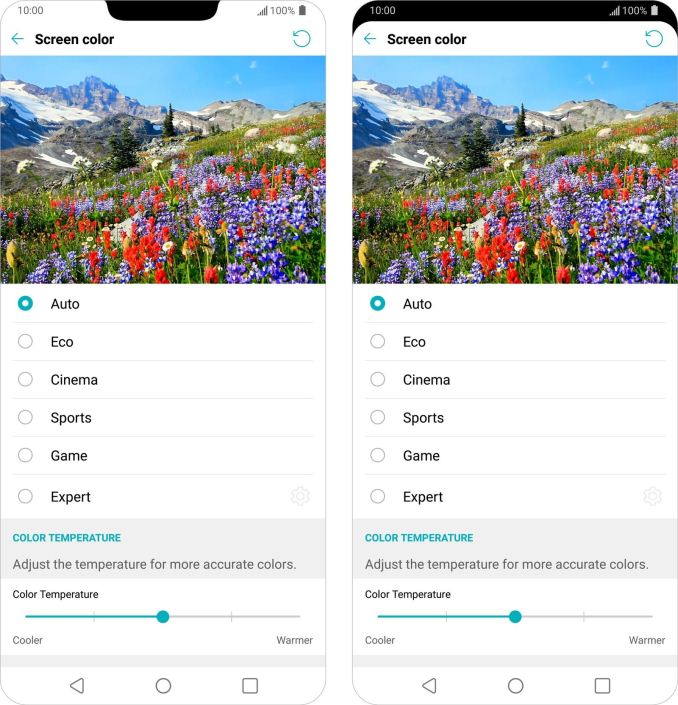

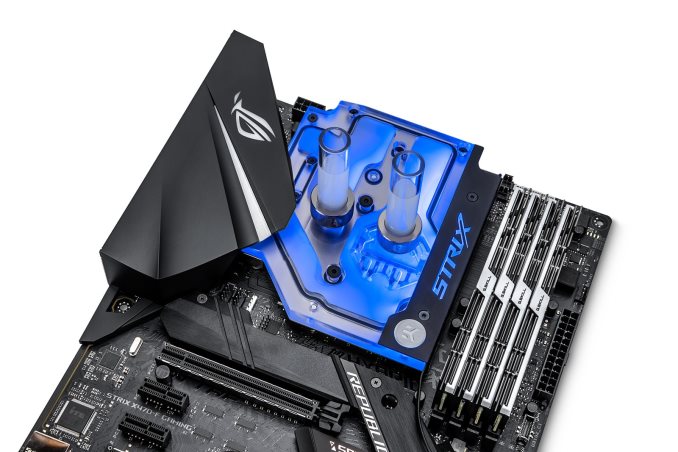
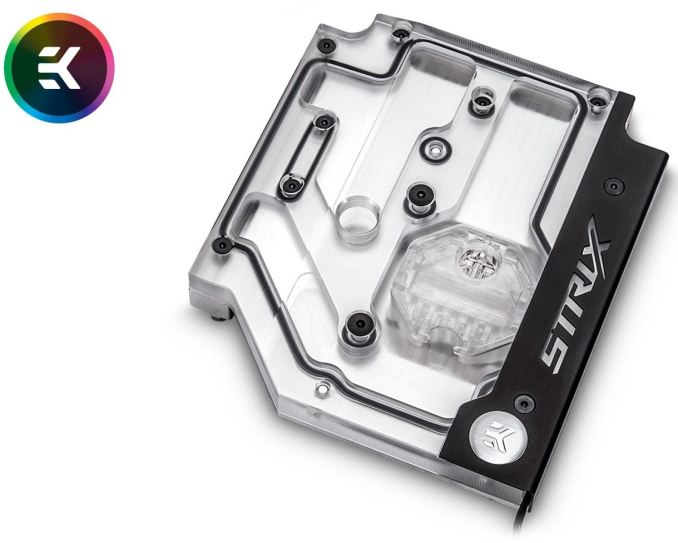
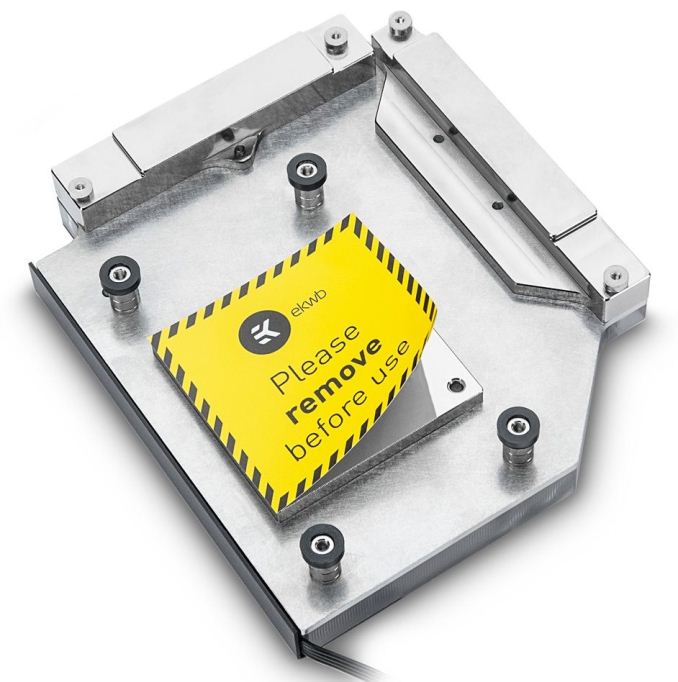

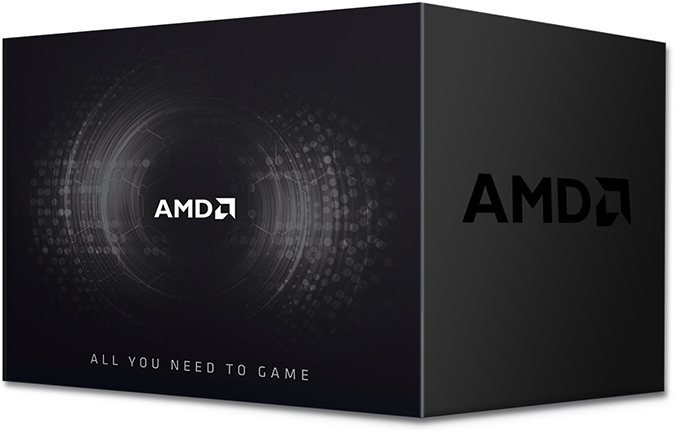
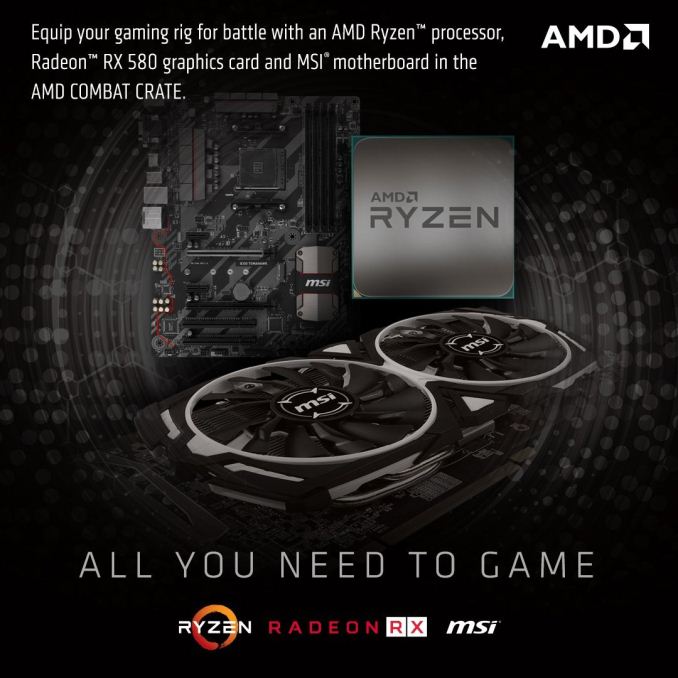
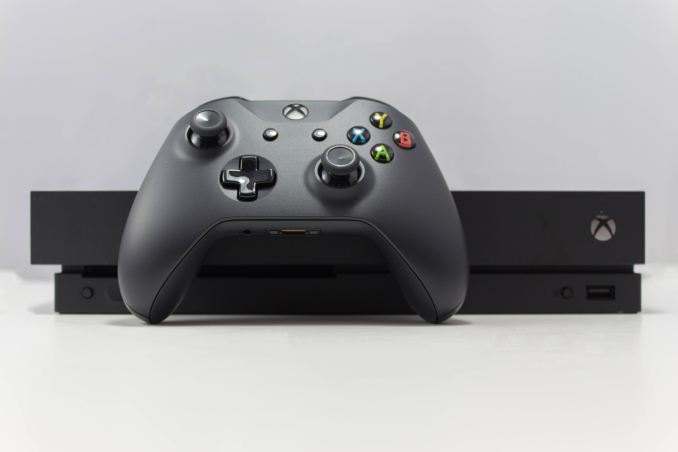
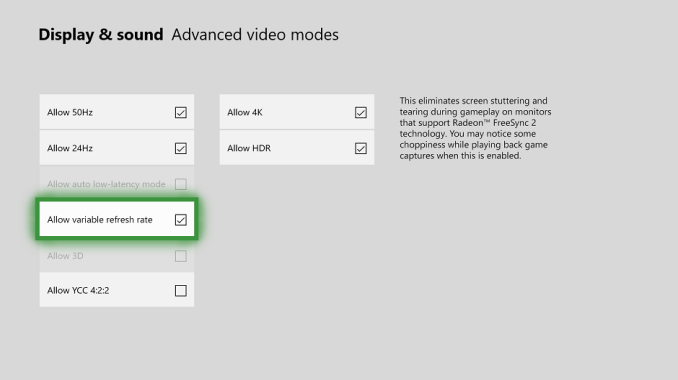
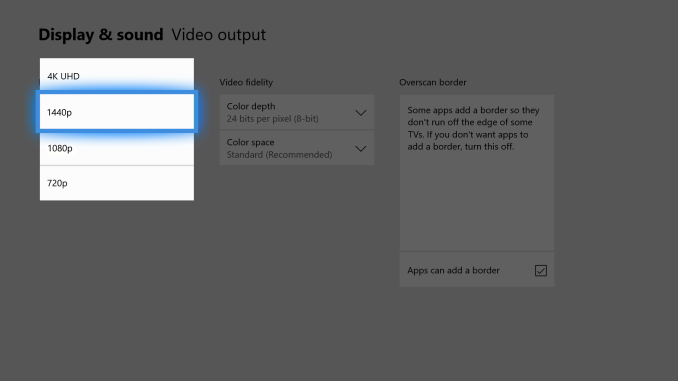

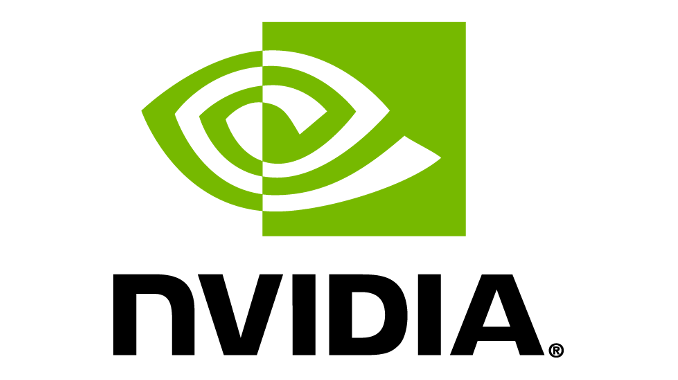


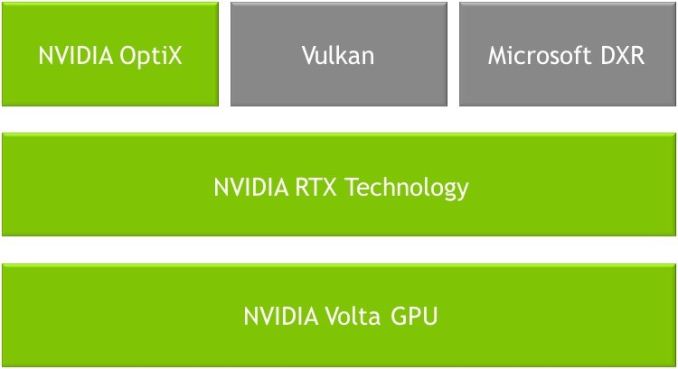

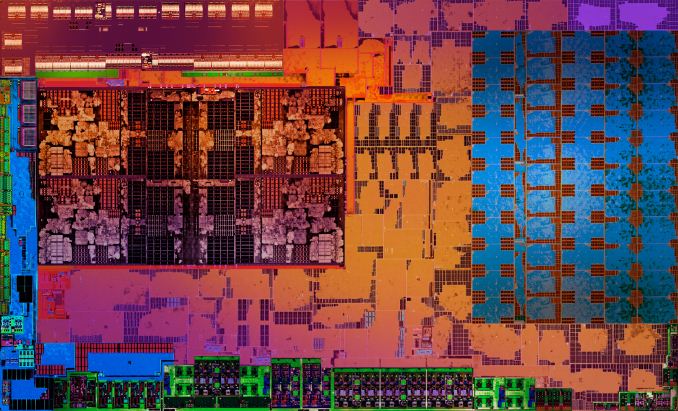
















Bookmarks